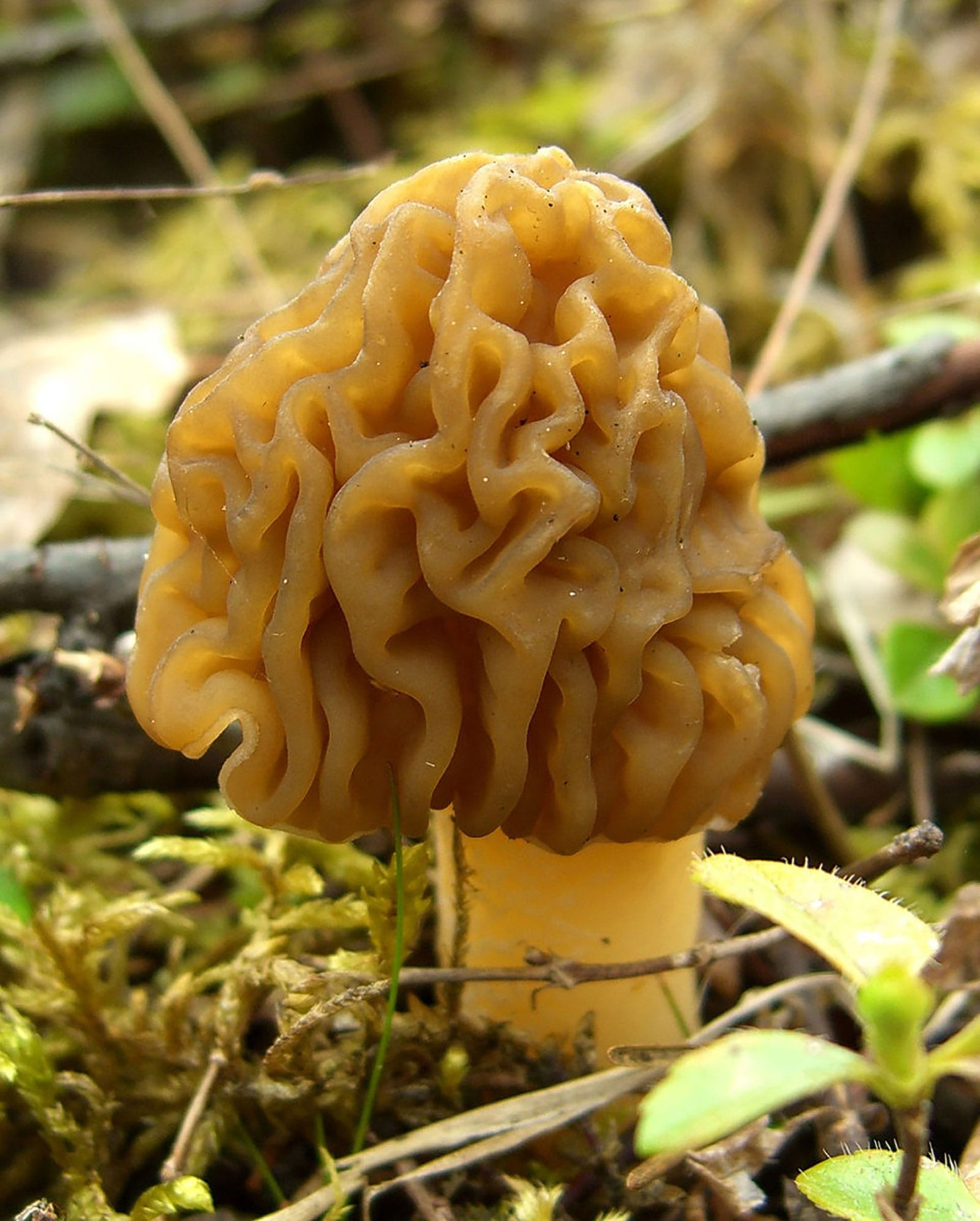Physical Address
304 North Cardinal St.
Dorchester Center, MA 02124
Physical Address
304 North Cardinal St.
Dorchester Center, MA 02124




These two closely related cousins to the morel can easily be confused with the true morels unless one is paying close attention. There is debate over whether the Verpas are edible with some eating them and others experiencing gastrointestinal discomfort and reduction in muscular mobility. As with all things mushrooms, it is best to leave this one alone and not take chances.
What Does A Verpa Mushroom Look Like?
V.bohemica looks like a smaller version of the other false morel, G.esculenta. The cap has a similar brain-like, wrinkled, appearance and is pale yellow or brown in color. The cap is attached to the stem at the very top but the base of the cap is not attached to the stem, it hangs freely like a little wrinkled bell. The cap ranges from 1-5 cm tall and the stem ranges from 6-15 cm tall and .05-3 cm thick. The stem of V.bohemica is creamy white and often has variances of white-ish and brown-ish ribbons. The inside of this verpa is not hollow, it is full of cotton-like wisps.
V.conica has a smooth tan or brown cap with very little if any wrinkles. The cap sits atop the stem and is commonly described as looking like a thimble balanced on top of a pole. Like its’ cousin, the cap is only attached at the top of the stem and hangs freely around the stem. This cap of this mushroom is much shorter than its’ stem. The cap ranges from 1.5-4 cm tall and the stem ranges from 2.5-11 cm tall and .05-1.5 cm thick. The stem is white-ish and straight. The cap is sticky when it gets wet. The stem and cap of V.conica are usually full of wispy cotton-like fibers, however, it can also be hollow.
Verpa mushrooms grow in the Spring at the same time as morels which is one reason they are misidentified. They grow under hardwoods primarily but also have been discovered growing under conifers, especially in California. They are widely distributed throughout North America.
How Can I Tell The Difference Between a Verpa and a True Morel?
The main difference is the cap. On both verpas, the cap is only attached at the very top, hanging freely around the stem. The majority of morels have caps that attach to the stem where the base of the cap reaches the stem. If you have a mushroom with a cap that hangs freely like a bell, it is a verpa.
Verpas most often are confused with the half-free morels, M.populiphila and M.punctipes. Both the half-free morels have caps that attach half-way down the stem, which is different from other morels. This is still different from the verpa which doesn’t attach down the stem at all. Always check the caps if you have any apprehension.
Another feature that is different is the hollowness factor. V.bohemica almost always has cotton-like wisps inside the stem and V.conica usually does. True morels are always hollow.
Be attentive when you are out there foraging. Always inspect every mushroom you gather because sometimes the false ones and the real ones will grow in close proximity. If you ever have any doubt, throw the mushroom out.